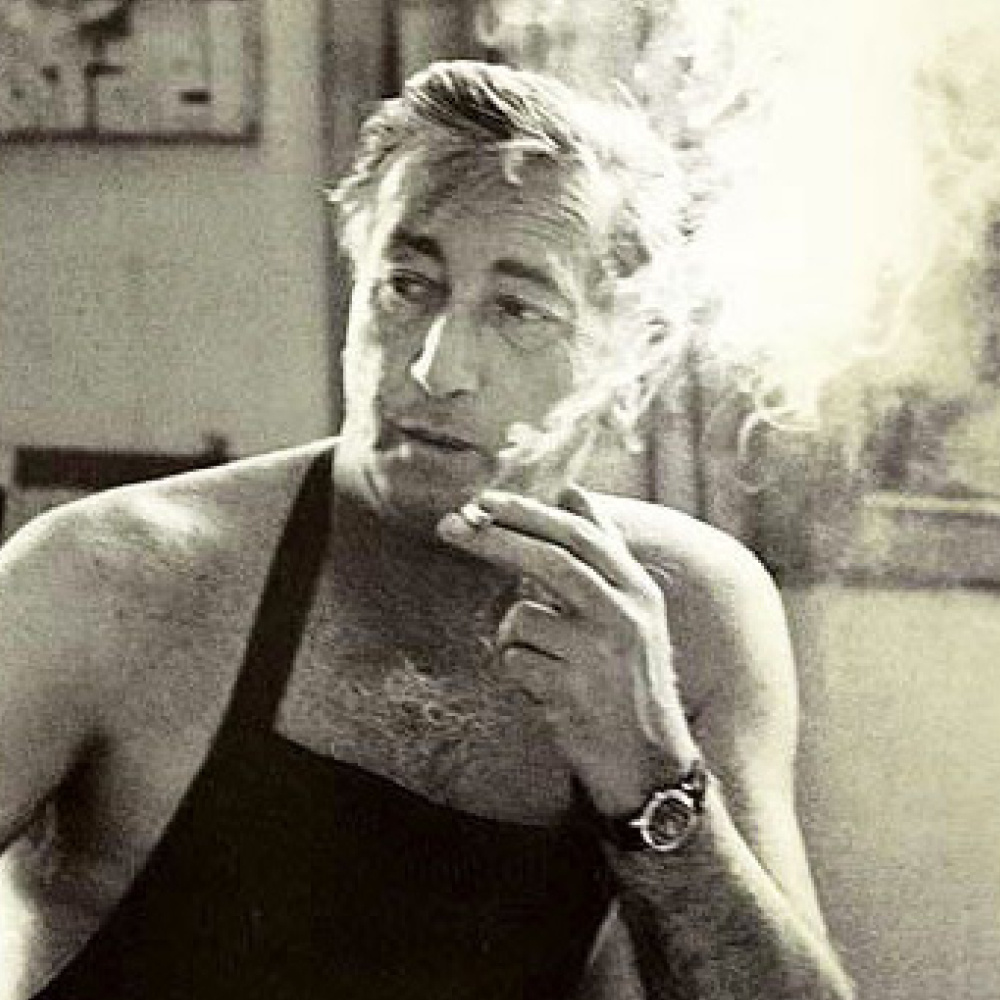David Schneuer
(1905 - 1988)
Born in 1905 in Galicia, Poland, David Schneuer grew up in Munich. Upon graduation from school, he moved to Paris, where he associated with many artists whose works helped to define the Expressionist movement. Eventually, he returned to Munich and joined the staff of the Munchener Schauspiellerhaus, collaborating with such influential theatrical figures as Brecht in producing numerous stage designs and posters. The motifs of his theater work, exuberant and sensuous characters drawn with virtuosity and refined in subtle colors, are the foundation of his paintings.
In 1933, he was arrested and imprisoned in Dachau as a cultural revolutionary. After his release, he immigrated to Palestine and settled in Tel Aviv, where he became immersed in painting. His stylized figures inhabiting the bars and cafes in his paintings were reminiscent of Munich and Paris in the 1920's, preserving German Expressionism at its best, alongside George Grosz and Beckman, and Kirchner.
Schneuer's works can be found in permanent collections around the world including the Munchener Stadt Museum, Spertus Museum, Chicago, Boston Fine Art Museum, Vancouver Museum of Art, Rijksmuseum, Amsterdam, Tel Aviv Museum, the Israel Museum, Jerusalem, the Bass Museum, Miami, and the Joensuu Art Museum, Finland.

AVAILABLE WORKS
Our inventory changes frequently. Please view available works below or click FOLLOW to be notified of new arrivals.
FOLLOW THIS ARTIST
Interested, but not ready to move forward yet? Want to be the first to know about new arrivals? Follow this artist to be notified.
FOLLOWI'm interested!
Please fill out the form below, and we will add you to this artist's waiting list and our monthly gallery news. We will inform you when there are new arrivals or important news. If there is something specific you are looking for, for example a certain size, please let us know here and we will keep an eye out for it.
more about this artist
Biography
David was born December 16th, 1905. In his early childhood the family, on its way to America, delayed in Hamburg, and eventually settled for good in Munich. “My father, a handsome man, belonged to the middle intelligentsia. He had studied in a Yeshiva and knew his Talmud. He wanted to be a writer, but was forced by circumstances to become a businessman. His German was faultless, “whereas my mother spoke a mixture of German and Yiddish”, When his father was conscripted into the army during the First World War, his mother brought up the children, eking out an existence from a dress shop. “I went to a Catholic school and grew up to some extent at home, and more in the streets, playing with the Bavarian children of the neighbourhood”. Towards the end of his studies at the OBERREALSCHULE (secondary school), Schneuer was a member both pf BAR KOCHBA, a non-Zionist Jewish sports club, and of BLAU-WEISS, an association preparing its members for Zipnist activity. In .this framework, Schneuer was sent to East Prussia and trained in assorted farming chores: loading the harvest on horses, sowing potatoes. Schneuer underwent some of the formative experiences of his life before the age of 20.eanwhile, he did not know whether to be a German, a German Jew or a Zionist Jew, a farmer or a merchant. Of medium height and broad-shouldered, diligent, and energetic, he was destined to become a “craftsaman”. “Farming was actually my first preparation for craftsmanship,” Says Schneuer. The turn of events, combined with his intuition and strong sensuality, were to make the craftsman onto an artist.





